

Globalizing Terrorism and the Internet
Francis A. Beer
G. R. Boynton
The war of the decade is the war on terror. It is a war fought as surely in the public domain of communication and culture as on other battlefields. News organizations that aspire to a global audience constitute this public domain and bring it to the internet. It is on the internet that they write and broadcast because the internet is their infrastructure for reaching a global audience. To assess how this war is playing itself out requires systematic attention to these globalizing media. That is what we do in this paper.
Terrorism is a compelling story because it taps into strong emotions: Threat
 |
 |
Mourning
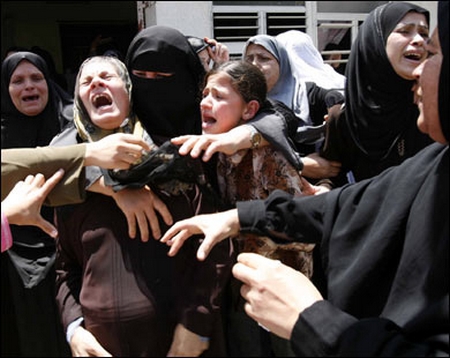 |
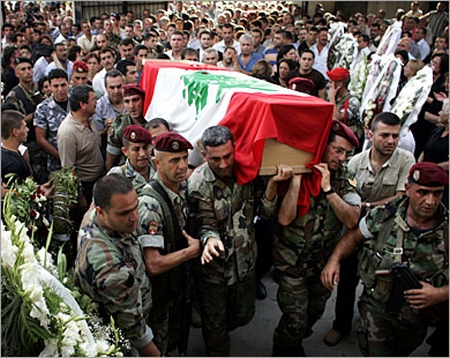 |
Patriotism and high politics
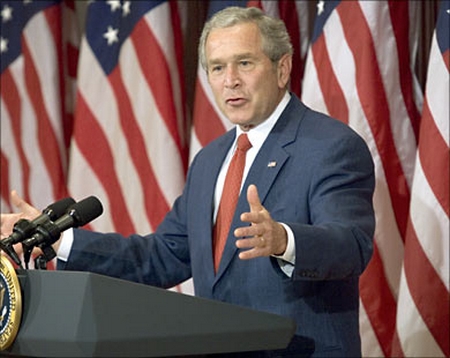 |
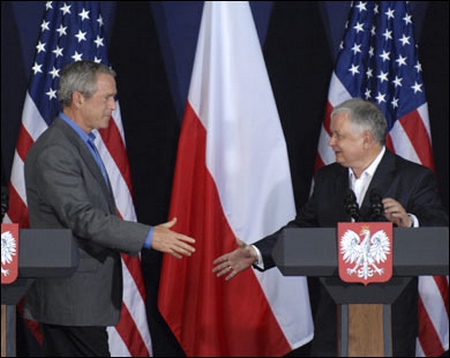 |
There is little wonder that politicians seeking to buoy their rule find this a compelling story to tell.
For news organizations, which are the principal communication vehicle for the stories politicians tell, it is a compelling story because of its appeal to the broadest possible audience.
However, there are times when terrorism becomes an anchor rather than a buoy for politicians. So, on April 16, 2007 Hilary Benn, presumptive deputy leader of the Labor government, said UK officials will no longer use the phrase 'war on terror.' It is, he said, inaccurate and counter productive.
It is "the vast majority of the people in the world" against "a small number of loose, shifting and disparate groups who have relatively little in common" . . .
"And by letting them feel part of something bigger, we give them strength."
With the turn of a phrase the "war on terror" is over -- at least for the new Labor government.
His speech was covered by both BBC World [Benn Criticizes 'War on Terror.' April 16, 2007] and Aljazeera's English language website [UK abandons 'war on terror' phrase, April 16, 2007] for global audiences.
Apparently, Mr. Bush did not get the memo for on May 24th he was back with new, formerly, classified information suggesting that bin Laden had ordered al-Zarqawi, leader of one of the oppositions in Iraq, to set up a cell as a staging ground for attacks on the U.S. His speech was also covered by BBC World and Aljazeera's English language website. Parenthetically, BBC noted that "the Bush administration did not raise its national terror alert level at the time" the document, which had just been publicly released, was prepared in 2005.
When and how politicians find terrorism a compelling story is a fascinating question, but it is not our question in this research.
We are interested in how standard practices of news organizations make terrorism a particularly compelling story to the news organizations themselves. Yes, it is a story that attracts a broad audience. But we will suggest that beyond its appeal to audience there are elements in the gathering and the writing that make it a compelling story for the news organizations.
The news organizations, whose practices we examine, appeal to global audiences via the web. The English language version of Aljazeera, BBC World and CNN World all reach for a global audience with news websites using the first technology of communication to inexpensively and rapidly reach from anywhere to anywhere. Their reports become the stories of the globe. They are the vehicle for globalizing terror or globalizing any other story that would attract a global audience.
When the standard practices of the news organizations coincide with the interests of the politicians you have globalizing terrorism.
This is part of a decade long research program on the communication of global news organizations. We began by examining the practices of a CNN televised news program -- WorldView. We followed that with the TV news program BBC World. When Aljazeera instituted its English language website we shifted our focus to the web communication activities of the three news organizations. Some of our reports are available at Inpress.
The three practices we examine in this report are:
bin Laden
In 2007 Time named Osama bin Laden one of the twenty-one most important world leaders.
 |
They did it with deprecating humor, however, with a cartoon image and a first line "perhaps it all comes down to birth order. The 17-th son out of 54 children is a notoriously difficult slot."
2007 was also bin Laden's fiftieth year. Both CNN World and Aljazeera English reminded their readers about this anniversary.
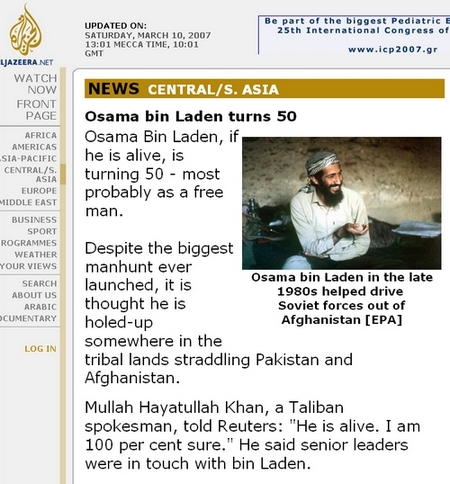 |
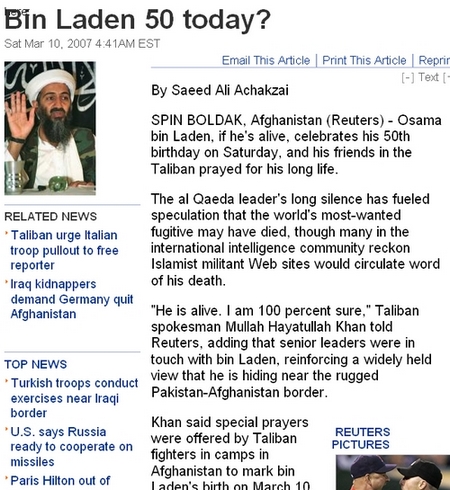 |
Reuters was the common source for the news stories. CNN World used the Reuters story above and Aljazeera used some Reuter's materials in writing their own report.
Man of the year, celebrating his birthday -- this is celebrity politics. How does a person who cannot leave a cave in what are among the most remote mountains in the world become a global celebrity?
The construction of bin Laden as a public figure began in 1998. The U.S. embassies in Kenya and Tanzania were bombed simultaneously with hundreds of deaths and thousands of people injured. There was shock and mystery; shock that the bombing had occurred and mystery about who done the bombing.
The bombing was August 7; it was not until August 12 that the U.S. mentioned bin Laden as a suspect. That day was his introduction to the world. We recorded CNN's WorldView from January 1998 through December 2000. Bin Laden was not mentioned in a WorldView news broadcast in 1998 before the August bombings. We also did a search of the CNN archive of news reports. There was a single report mentioning bin Laden in 1996, 3 before August in 1998, and 450 after the bombings through 2000.
It took five days for bin Laden to become the suspect in 1998. Never again would it take more than a day. When a US embassy and UN offices were rather unsuccessfully bombed in Pakistan in 1999, when the USS Cole was bombed in 2000, and then 9/11 bin Laden was immediately identified as possibly the culprit.
But it is the characterization of bin Laden in reporting these events, and the actions they precipitated, that established him as a global figure.
The first characterizations of bin Laden, in August 1998, told that he was an exile from Saudi Arabia, that he left with millions of dollars, that he was based in Afghanistan, that he had good connections with other Muslim terrorist groups, that he was linked to the bombings in Kenya and Tanzania, and that he had been a Ronald Reagan freedom fighter driving the Soviets out of Afghanistan.
Subsequently, bin Laden was characterized as the terrorist mastermind [19 times] who planned and carried out the bombings of U.S. embassies in Kenya and Tanzania [25 times]. The 1998 bombings did not fade away; bin Laden was as frequently characterized as responsible for the bombings in 2000 as in 1998. The horror, the destruction, the deaths of 1998 became a permanent facet of his person -- at least until 9/11. And it was almost always mastermind. He was the man behind the scene, recruiting, planning, and directing terrorism. [link to counts]
Mastermind meant that he was directing the operations. His leadership was regularly identified by claiming links between the people who were captured and bin Laden [16 times]. They were evil because they were associated with him. He was the center of the movement by being linked to all of them. After the bombing of the USS Cole the U.S. raised the threat level for troops because of a threat from an Egyptian militant -- who was sitting next to bin Laden in a videotape broadcast.
Mastermind meant that he was issuing threats [16 times]. When threats were picked up by government officials they frequently identified the source of the threat as bin Laden or his organization.
The mastermind of terrorism was a man -- Osama bin Laden. Is it only he who was portrayed by the media? What about his organization Al Qaeda? Al Qaeda appears in these texts only twice, and each time it was spelled Al Quaida, which was the initial spelling that has been transformed to Al Qaeda. The usual designations were organization [10 times], group [5 times], and terrorist ring or network [8 times]. However, in each case it was bin Laden's organization or bin Laden's group, or the terrorist network led by bin Laden. The organization had reality only as a reflection of its leader.
Years later, and we know one more thing about bin Laden. In the spring of 2007 the commander of the Taliban military force in Afghanistan was killed and replaced by his brother Mansour Dadullah.
Mansour said: "Sheikh Osama bin Laden is alive and active. He's carrying out his duties.
"The latest proof that he is alive is that he sent me a letter of condolences after the martyrdom of my brother. He advised me to follow my brother's path."
Bin Laden is no longer seen or heard -- even by his commanders.
 |
He has become a shadowy rorhshach which can become whatever one wants. He is the figure who Mansour and his comrades revere and who they pray will live for 200 years. When Time wants to titillate their readers bin Laden serves. When political leaders want to justify their actions bin Laden serves. When globalizing news organizations want to attract an audience bin Laden serves. This is the role of a global celebrity.
Talking with the Taliban
Global audiences are heterogenous. A news organization that aspires to a global audience cannot present a homogenous version of events. If they do they lose audience, and their audience is no longer global. Though there are differences in focus Aljazeera English, BBC World, and CNN World all aspire to global audiences.
One way to work out heterogenity is to let both sides, or all sides, have their say. Quote one side, and quote the other side -- instant heterogeneity.
You can easily do that with Democrats and Republicans or Labor and Conservatives. It becomes a bit more dicey when you are reporting on a conflict such as the current conflict in Afghanistan: the Taliban versus some Afghans and the western world.
But when bin Laden turned fifty CNN World was there. While they did not talk with him they did talk with Taliban spokesmen who assured them that bin Laden was alive and directing operations in Afghanistan. When Vice President Cheney visited Afghanistan, and an attempt was made to bomb his visit, CNN World told the story as recounted by the US. They also told the story as recounted by the Taliban [CNN World April 25 2007]
BBC sent a reporter to travel with the Taliban to report on the sources of their support [BBC World October 24, 2006]. He reported: 1) the Taliban is the most mobile army in the world. They hop in their pickup trucks [the personnel carriers of choice] and go. 2) They live off the land. Villagers are expected to provide food and a roof, and they do. 3) They understand that much of their appeal is for ending corruption. The population's weariness with the corruption of the warlords brought them victory earlier. The increasing corruption of the current government brings them strength. And 4) "all know the story of Afghanistan's past victories over the British. Engraved in their collective folk memory of Afghanistan's warrior history are tales of the defeat of the British in 1842 and 1880 along with the defeat of the Russians in the 1980s."
And, of course, BBC World regularly reports the version of events of ISAF, the western army, as well.
Interspersed with recounting the details of the events is a dialogical first one side and then the other. This rythmic pattern is represented in the table.
NATO retakes Taliban-held town : Aljazeera English April 07 2007 |
|
| 1. ISAF statement | 2. local Taliban commander |
| 3. local resident | |
| 4. NATO officials | |
| 5. Afghan president | |
| 6. Kabul police chief | |
UN workers killed in Afghan blase : Aljazeera English April 18 2007 |
|
| 1. Police said | 2. Taliban claimed responsibility |
| 3. United Nations spokesman | 4. Taliban spokesman |
| 5. Taliban commander | |
Taliban leader says bin Laden alive : Aljzeera English April 25 2007 |
|
| 1. Senior Taliban commander | 2. White House spokeswoman |
| 3. Deputy police chief of Kabul | |
| 4. Afghan general | |
| 5 Taliban fighters | |
US troops killed in Afghan crash : Aljazeera English May 30 2007 |
|
| 1. US military official | 2. Taliban spokesman |
| 3. British military spokesman | 4. Taliban spokesman |
| 5. senior US military officer | |
First, ISAF, then a Taliban commander, then a local resident, then NATO official, Afghan president, and Kabul police chief. Then in the April 18 report you get: 1. police, 2. Taliban, 3. United Nations spokesman, 4. Taliban, 5. Taliban. There is a back and forth between western officials, Afghan officials, and the Taliban in these reports.
Each of the news reports summarized in the table is slightly different. Obviously, the west and Afghan officials get a somewhat larger say than does the Taliban. The Taliban is considerably more difficult for reporters to reach, which is surely part of the reason they are not quoted as frequently. But it seems clear there is a rough letting all sides have their say in the reporting.
After all, they are reaching for a global/hetergenous audience.
But it takes two to make this work. The aspiration for a global audience may be persuasive to the news organizations, but it also has to be persuasive to 'the sides.'
There are many hints that all sides understand this as a war of words as well as a war of guns. Aljazeera English notes this in reporting on a NATO military operation to reclaim a region in Afghanistan.
"Six weeks ago Al Jazeera filmed in this same area. It was clear then it was entirely under Taliban control," James Bays, Al Jazeera's correspondent in Afghanistan, said.
"There is an information war as well as a military battle going on. Nato now say they have retaken Sangin but before they never admitted it had been held by the Taliban." [April 07, 2007]
In earlier research we found --
When NATO began to bomb Yugoslavia one of the first acts of the Yugoslav government was tossing the western press out, and the press filmed themselves walking across the border. Judy Woodruff, anchor for WorldView, and Christiane Amanpour, a reporter who had walked out, asked each other -- how are the Yugoslavs going to get their story out? It took only two days and the western press was back in. The Milosevic regime wanted to be able to get their story out, and that depended on the global press. The Yugoslav press would not be taken seriously beyond the borders of Yugoslavia.
It took the Taliban somewhat more than two days. When NATO began to bomb them in 2001 they did not immediately understand that they needed to get their story out. But before they were driven from the country they were having regular press conferences for the global press including reporters who were women and whose heads were not covered.
In their resurgence the Taliban has made sure to communicate with the global press to get their story out.
When the standard practices of the news organizations coincide with the interests of the politicians you have globalizing terrorism.
The Prize is not for the Faint of Heart
 |
BBC Reporter in Afghanistan, 2001 |
This BBC reporter was making his way to meet with Northern Alliance commanders. The mode of transportation available to him -- a mule. He forded the river on the mule. Don't ask where the camera man was who was taking the video. He may have had to ride the mule the entire way -- though, then as now, pickup trucks were their favorite mode of transportation. He did get there, and he did get his story. And getting there, the mule, was part of the story.
The prize goes to the reporters who face the most danger, who have to dig the hardest. That is why the mule is part of the story about the Northern Alliance. The reporter does not want us to miss what it took for him to get that story.
That was Afghanistan in 2001. It was a time when there was a line; the reporter was guided through trenches that were the line between the Taliban government and the Northern Alliance of independent warlords. Reporters were on one side of the line or on the other.
The Taliban resurgence of 2007 is not configured by a line. It is a war of insurgency. The Taliban move in and occupy a territory. When ISAF forces engage they use the mobility the BBC reporter noted, to escape to fight another day in another place. The battlefield is constantly being reconfigured.
What are reporters to do in a war of insurgency? They are attempting to talk with the very men ISAF is attempting to kill. It is a greater challenge than reporting wars configured by lines. It is a more dangerous challenge than reporting wars configured by lines.
The prize is not for the faint of heart. And wars of insurgency become an opportunity to show the mettle of which you are made.
Conclusion
Let's return to Hilary Benn
It is "the vast majority of the people in the world" against "a small number of loose, shifting and disparate groups who have relatively little in common" . . .
The loose, shifting and disparate groups composed of George Bush, Tony Blair, Ehud Olmert, Pervez Musharaff, and their men -- and others -- are able to impose their wills on the vast majority of people in the world, and along the way kill by the hundreds of thousands and spend vast wealth by saying the words "war on terror."
But their saying carries only as far as the medium, in which they flow, reaches. Hence, it is important to look at the construction of the medium to determine how it carries these words -- and not others -- around the world.
That is our project of which this is one small piece.